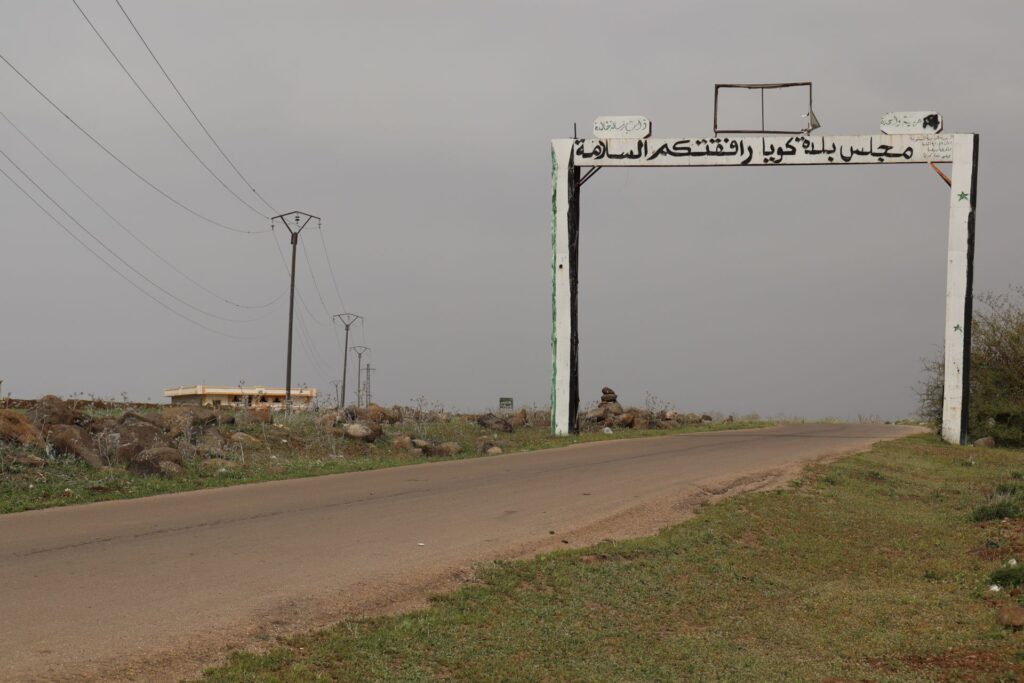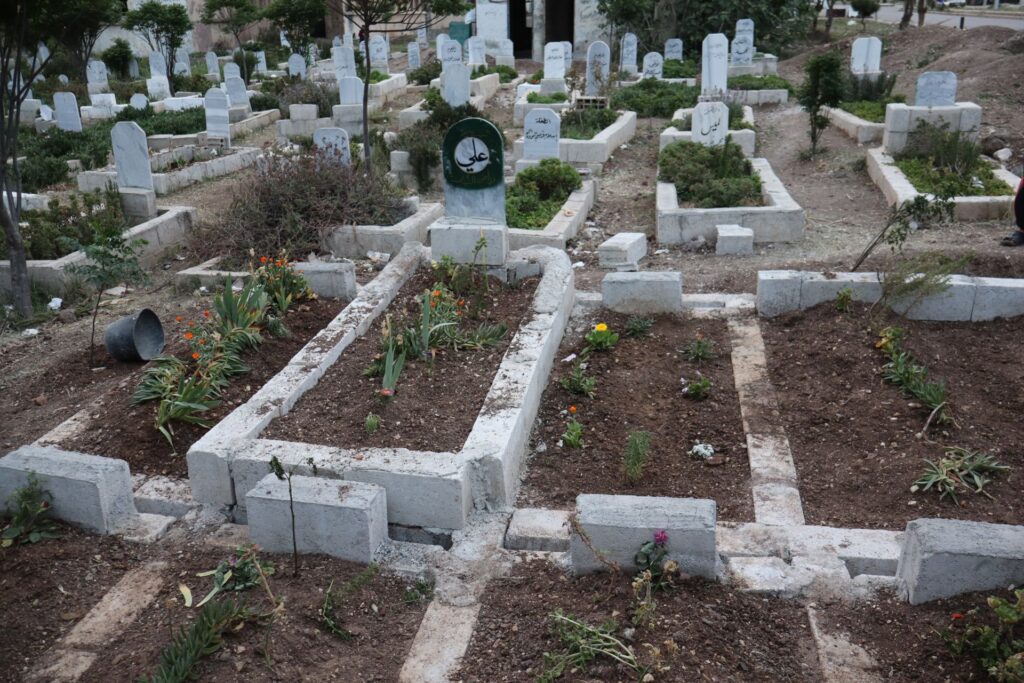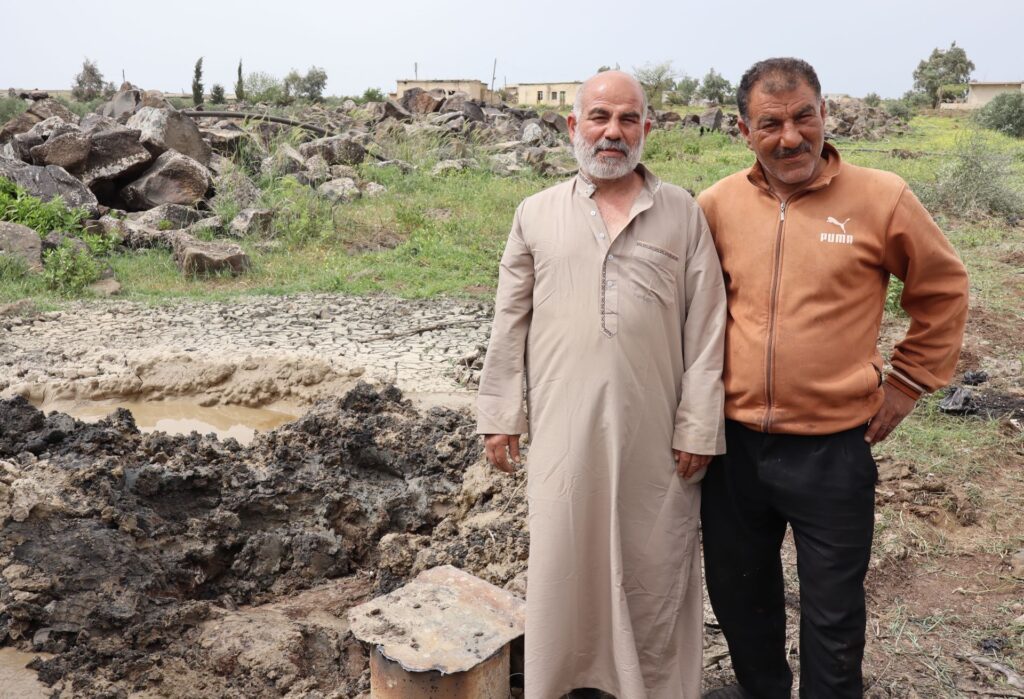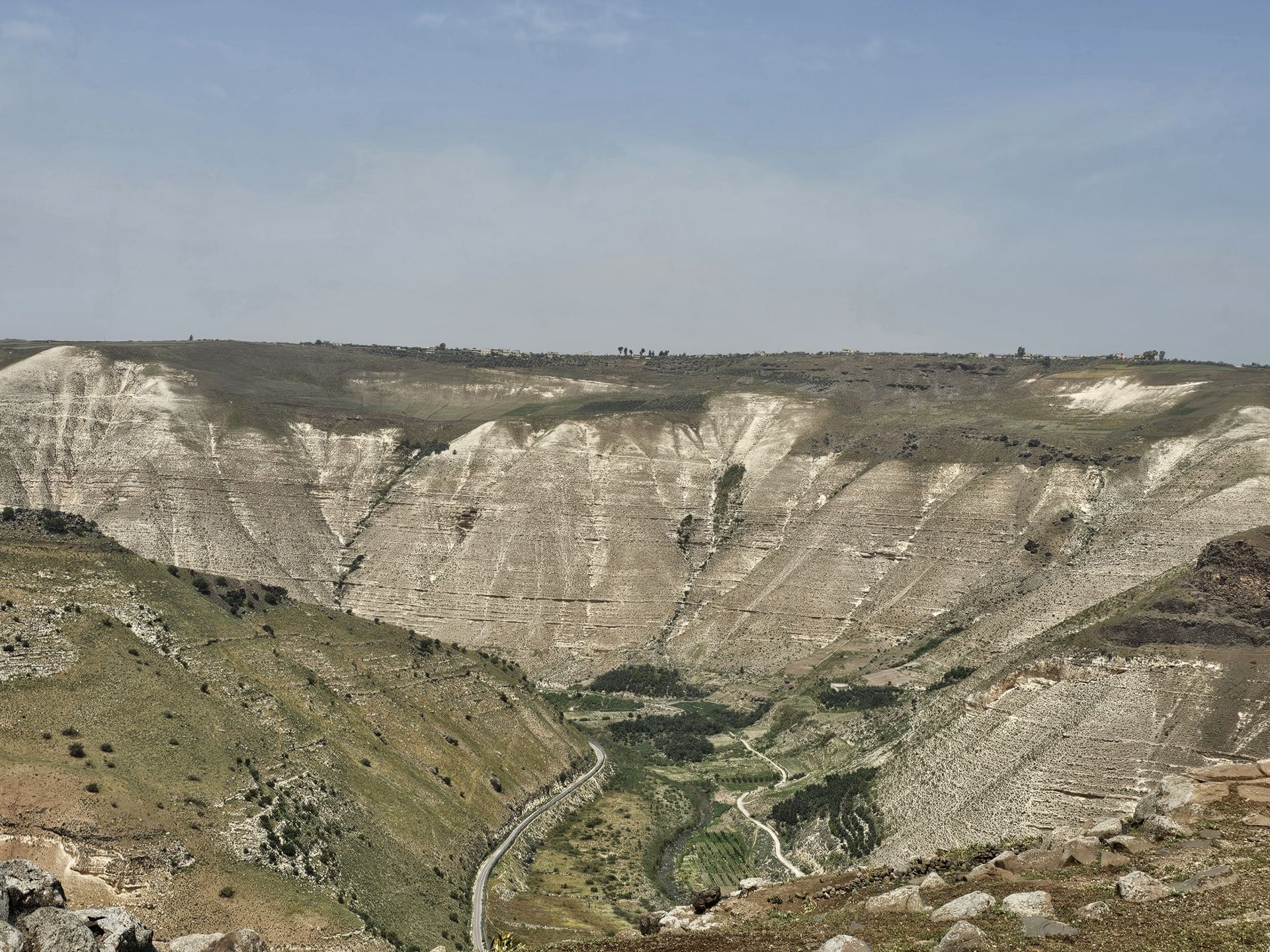Early last month, Abed, 45, was harvesting zucchini in the fertile valley of Syria’s southwestern Houran region when military vehicles barreled through the fields, kicking up dust and crushing his crops.
“They surrounded us, and of course we couldn’t understand them because they spoke Hebrew. They took us in cars, blindfolded us, and brought us to the Israeli border,” he says, gesturing with his weathered hands toward a hill, its ridge sparsely lined with trees. His name and that of others in this essay were changed for security reasons. The village, situated between the occupied Golan Heights and Jordan, now finds itself under the watchful eyes of Israeli forces stationed atop the ridge.
For seven hours, Abed and seven other farmers were interrogated by Israeli soldiers. “They asked us if people [in the village] were armed and whether we had [Islamic State group], Hezbollah or Iranian fighters among us. We told them that we are a community dependent on agriculture,” he adds.
Israeli forces have also been active in neighboring villages, such as Maariya, carrying out raids and arrest campaigns. In one instance, a farmer was detained indefinitely, his whereabouts still unknown, according to the head of Kawaya municipality.
Since the rapid collapse of the Bashar al-Assad regime last December at the hands of opposition factions, Israel has moved swiftly to reshape the contours of power in Syria’s south. Within 24 hours of the regime’s fall on Dec. 8, Israeli forces invaded the 150-square-mile demilitarized buffer zone separating Syria and Israel, violating a 1974 ceasefire agreement. They also carried out a blitz of airstrikes on military sites across southern Syria and the rest of the country.
In the months since, Israeli forces have continued to make inroads into Quneitra and Daraa provinces, seizing strategic military points and building outposts. In Daraa, residents of Kawaya and Maariya have come into direct contact with the Israeli military, which has limited access to their lands and vital water resources by seizing a major dam.

The Houran — a region stretching across northern Jordan and southern Syria — is known for its wheat; it was Syria’s breadbasket for centuries until being supplanted by northeastern Syria. Still an agricultural hub, it is now also a place where residents are struggling to survive.
In late March, Israeli troops attempted to advance into Kawaya’s valley, prompting over a thousand unarmed or lightly armed residents of the village to repel their advances.
“The men panicked and defended the land,” says Ahmed, 45, another farmer from Kawaya, whose sun-wrinkled face reveals a deep weariness.
Israeli forces responded with drone strikes that killed seven people and injured 12 others, including the brother of Kawaya’s local council president. They occupied an area on the outskirts of the village, then dropped flyers from warplanes banning residents from accessing the surrounding land, including the valley — a lifeline for farmers, herders and beekeepers.
“We didn’t attack Israel, Israel attacked Kawaya and our land and entered. Those that resisted are our men and only from our region,” Ahmed says. “Whether or not civilians participated with weapons, it’s normal for us to defend our lands. We consider Israel to be an occupier.”
A similar incident unfolded earlier in April in neighboring Nawa, where about 2,000 men who were either unarmed or lightly armed with hunting rifles mobilized to prevent Israeli forces from seizing the Jabiliya Dam and Tel al-Jomaa — the site of a water reservoir that represents the primary source of drinking water for Nawa and six other villages. Israel retaliated with drone strikes that killed nine people but ultimately withdrew. According to family members, the bodies of those killed were unidentifiable and had to be buried in unmarked graves.
Village residents depend on nearby water sources to drink and tend to their crops in a region already heavily impacted by climate change and water scarcity. As such, Israel’s control of key water resources allows it to extend its control well beyond the land it directly occupies.

Water from Jabal al-Sheikh (Mount Hermon), which straddles the Syrian and Lebanese borders, flows to a network of dams and reservoirs downstream. Al-Mantara dam — the largest in Quneitra — feeds water to eight other dams in southwestern Syria. With this key dam now under Israel’s control, it has the capacity to limit the flow of water, as it has to Abdeen dam, which provisions Kawaya, Maariya and three other villages in Daraa province.
In Kawaya, “there is no water, neither to drink nor to water our crops in the valley or its surroundings,” says Abdulmanam, 51, another farmer. With Israel limiting the water flow and with sparse rainfall this year, he has dug into his savings and borrowed money from friends to drill a well, which cost him $11,000. He needs an additional $20,000 for a water pump and solar panel to power it. “We have to dig 200 meters below ground, and it’s very costly. Before Israel launched its offensive, we only had to dig 35 meters,” he says, pointing to a rudimentary metal tube in the mud.
Ahmed has also had to find alternative ways to water his crops. He is now forced to rely on water pumps to extract water from the valley, at significant added cost. He pays $6 to $7 per hour for fuel to power them for roughly seven to eight hours a day.
According to Muna Dajani, a research fellow at the London School of Economics in critical political ecology, Israel’s seizure of key water resources in Syria is consistent with its wider policy in the region.
“Israel has been cementing its water hegemony over the region’s water sources on multiple fronts,” she says. “This includes military occupation [through] the illegal seizing of land to secure the sources of water, [with] the West Bank and the occupied Golan being the clear geographies that have been the sites of water extraction for the benefit of settlement expansion and providing water, land and economic benefits to the Israeli state since the 1960s.”
Israel also utilizes “remote control,” she notes, influencing transboundary water sources without direct occupation. “It also exercises its soft power to deny river development, like the case of the Hasbani River,” which flows from southern Lebanon to the occupied Golan Heights and Israel.
Dajani adds that Israel has also expanded its control over the Litani River in Lebanon during its ongoing war with Hezbollah by systematically targeting water infrastructure. On April 17, Israel’s defense minister, Israel Katz, announced that its military forces would remain indefinitely in newly acquired buffer zones in Gaza, Lebanon and Syria. As for whether Israel’s control over water resources in Syria could be permanent, “It has the military power and the green light from the U.S.,” she says.

For 10 days, Israeli forces banned farmers in Kawaya from accessing their farmland in the valley. At the height of the zucchini season, entire crops withered and were laid to waste. Ahmed estimates his losses to be huge — around $15,000 to $20,000 — a ruinous sum for a farmer with modest means.
Since then, the valley has remained off-limits, but residents are trying to harvest and plant their crops nonetheless. Men stay away, fearing arrest, and send women and children into the valley instead. “We will try to plant the new season, but it’s a danger to our lives. We are living in a state of terror and fear,” Abed says.
In neighboring Maariya, inhabitants are completely restricted from accessing the valley, whether for farming or grazing. As a result, herders have to buy fodder, such as Taher, 52, who is spending $100 every week to feed his sheep and cows. He has five cows, and his brother has 40. Due to increased expenses, Taher was forced to sell off part of his herd.
Taher also maintains 25 of the valley’s 2,000 beehives. “[Israeli forces] allowed us to take out our beehives, but now they don’t allow us to descend into the valley.” The hives are supposed to stay in the valley, where temperatures are higher, until the month of May. With the seasonal cycle, which is critical to honey production, disrupted, “we risk losing the entire season,” he says with a sigh of resignation.
He lives two-thirds of a mile from al-Jazira, a military point that was previously controlled by the Syrian army and was seized by Israeli forces on Dec. 9. As a result, his house was raided. “There is terror because they would enter our homes and terrorize the children. They entered my home in the middle of the night,” Taher recalls.
Despite the ever-present danger and psychological strain, he and his family remain intent on staying. “We are anchored to our lands, we won’t leave our lands despite the violations against us,” he says.
“We are the sons of this region, we grow on our lands that we inherited from our grandparents. The most important thing is our land and our honor,” Ahmed echoes.
Emad Albasiri contributed reporting.
“Spotlight” is a newsletter about underreported cultural trends and news from around the world, emailed to subscribers twice a week. Sign up here.



